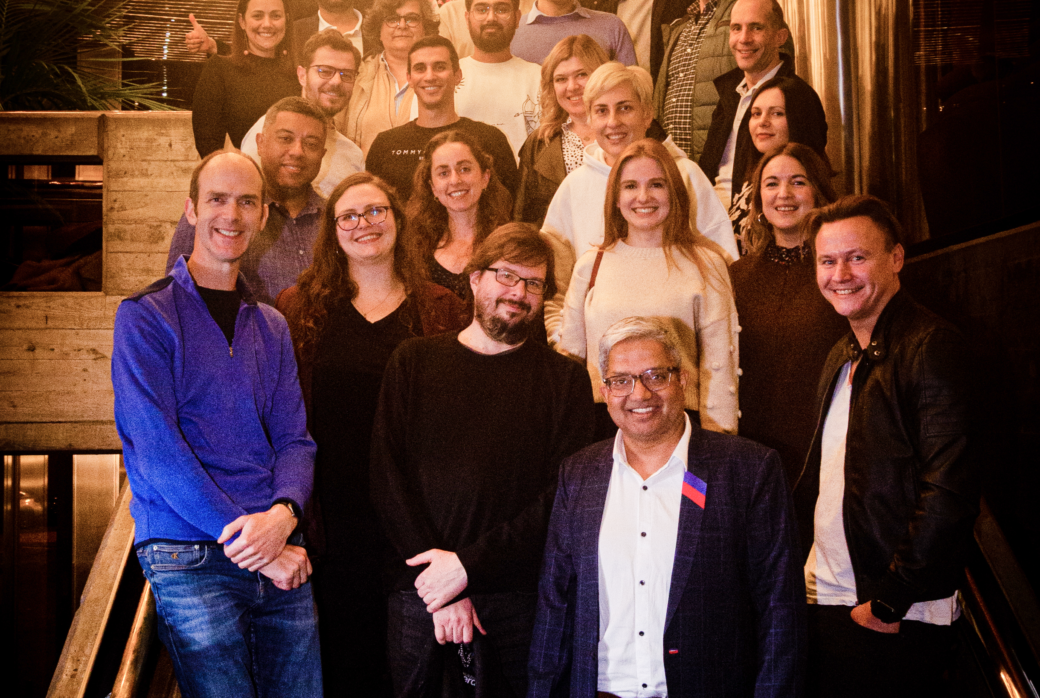Is Your Website Ready for the European Accessibility Act in June?
The deadline is fast approaching. By 28 June 2025, businesses offering digital services across the EU must be fully compliant with the European Accessibility Act (EAA) — and with fewer than three months to go, now is the time to act.
At Monsoon, we’re not just here to advise. We’re your partner in ensuring your business is compliant, inclusive, and fully prepared. Our goal is to help you navigate this transition smoothly, with a clear plan, expert support, and practical implementation from start to finish.
If your business hasn’t yet begun preparing for the EAA, there’s still time — but acting now is essential to avoid rushed fixes or regulatory risk.
Laura Hodson
Head of Design, Monsoon Consulting
Understanding the European Accessibility Act
The European Accessibility Act (Directive (EU) 2019/882) is a legally binding directive adopted by the European Union to ensure that digital products and services are accessible to people with disabilities. It sets out common rules for accessibility across all member states, making it easier for businesses to understand and meet their obligations while enabling equal access for users across the EU.
The directive applies to a wide range of services, including eCommerce platforms, financial services, ticketing and travel websites, self-service kiosks, and digital publications like eBooks. If you operate in one of these areas and serve customers in the EU, you’re required to comply.
So, what does that actually mean in practical terms?
Meeting the requirements of the EAA involves aligning your website or app with the Web Content Accessibility Guidelines (WCAG) 2.1, Level AA. The four guiding principles of WCAG are that site should be:
- Perceivable: The information you present on your site needs to be perceivable and understandable to people with use of only one sense
- Operable: Users need to be able to interact with all elements of the page, even with just a keyboard or voice controls, for example.
- Understandable: The content and functionality presented on a web page needs to be easily understood.
- Robust: The website needs to effectively transfer information to users, integrating capabilities to support evolving assistive technologies.
For some concrete examples, this could involve:
- Ensuring all images have descriptive alt text so screen readers can convey meaning to visually impaired users
- Using sufficient colour contrast between text and background to support readability
- Making all functionality keyboard-navigable, so users who can’t use a mouse can still access all content
- Providing clear form labels, error messaging, and logical tab order for improved usability
- Ensuring video content includes captions or transcripts
- Avoiding content that could trigger seizures or be disorienting to users with cognitive impairments
It also means thinking about how users interact with your site overall — whether they rely on assistive technologies, have slower internet connections, or are using mobile devices with accessibility features.
The goal is to remove barriers and create a consistent, inclusive experience for all users.
The Risk of Inaction
With enforcement just around the corner, businesses that aren’t already working toward compliance face significant risk. Penalties may vary by member state, but they can include regulatory fines, formal user complaints, or even being barred from certain public sector contracts.
Beyond the legal implications, there’s a reputational risk to consider. Users increasingly expect digital experiences to be accessible and user-friendly. Falling short could harm customer trust, search engine visibility, and overall business performance.
That said, accessibility is also an opportunity. A more inclusive website or app isn’t just a legal win — it also improves usability for all users, expands your reach, and helps your platform perform better across the board.
How We Can Support You
At Monsoon, we’ve developed a step-by-step process to help businesses meet the EAA requirements without disruption or confusion. We’ll begin with an initial audit of your current platform, identifying any accessibility issues in design, code, or content structure. Then a more comprehensive audit conducted manually by a team of experts and user testing by those who have disabilities. You’ll then receive a clear, actionable roadmap outlining what needs to be fixed.
From there, our development team can take care of implementation. That might involve updating colour contrast, improving navigation, adding alt text, making forms accessible, or enhancing compatibility with screen readers — all based on WCAG 2.1 Level AA criteria.
Once your site is compliant, we won’t leave you there. We’ll continue to monitor accessibility on an ongoing basis, providing regular reports, updates, and support so that you stay compliant as your platform evolves or as standards shift.
Let’s Make Accessibility Simple
Our goal is to make accessibility manageable, not overwhelming. With the right approach and support, compliance can become a natural part of your digital strategy — not just a one-time fix.
If you’d like to start the conversation or book an audit, get in touch with our team today. We’ll help you make sure your digital services are ready well before the June deadline, and work with you to build a more inclusive online experience for everyone.




